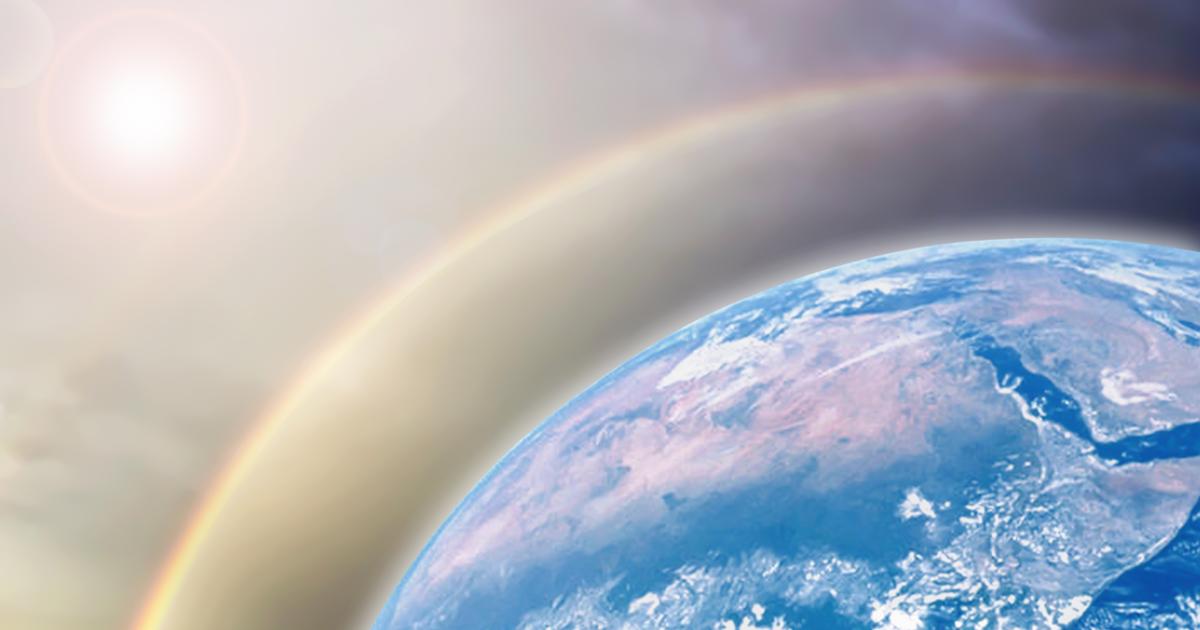This seems like great news.
In a report published Monday, January 9, experts mandated by the United Nations (UN) indicate that "
the ozone layer should return to 1980 values (before the appearance of the hole) by around 2066 au- over Antarctica, 2045 over the Arctic and 2040 over the rest of the world
”.
Clearly, the ozone layer - which filters the ultraviolet rays of the Sun and which thus protects the Earth and the life which is there - should be replenished within forty years.
“On a global scale, the ozone layer is already recovering very slowly
,
”
explains
Le Figaro .
, Sophie Godin-Beekmann, research director at the CNRS, president of the International Ozone Commission and who participated in writing this report.
In the report, the experts also note that “
the gradual elimination of nearly 99% of banned substances that destroy ozone has helped to preserve the ozone layer and contributed significantly to its recovery
”.
These "
prohibited substances
" are chlorofluorocarbons (CFCs), gases massively emitted by refrigerators between 1950 and 1990. They are located at an altitude of between 20 and 40 kilometers.
Faced with their harmful effect on the ozone layer, the Montreal Protocol was ratified in 1987 by 195 countries.
This protocol and its various amendments have "
resulted in the prohibition of the production of CFCs
"
,
recalls the Pierre-Sion Laplace Climate Research Institute (IPSL).
These gases, which are no longer produced today, thus continue to disappear from the atmosphere, allowing the ozone layer to reform.
Read alsoOzone layer: “We filled a hole in the sky”
And this positive development, of which Sophie Godin-Beekmann assures us "
not to be surprised
"
,
has real positive consequences on the planet and everything that lives on it.
Millions fewer cancers
The ozone layer therefore acts as a shield against certain harmful ultraviolet (UV) rays.
UV rays that can cause skin cancer in humans.
In May 2020, a report published by the United States Environmental Protection Agency (EPA) indicated in particular that "
full implementation of the Montreal Protocol is expected to prevent 443 million cases of skin cancer [and ] 2.3 million deaths from skin cancer
” in the United States alone, among people born between 1890 and 2100.
“
UV rays can also damage the eyes
,
”
adds Cathy Clerbaux, CNRS research director working on monitoring gas concentrations in the atmosphere.
For good reason, UV rays can cause cataracts, an eye problem responsible for a loss of vision.
According to this same EPA report, "
63 million cases of cataracts
" would be similarly avoided in the United States among people born between 1890 and 2100.
Read alsoThe “hole” in the ozone layer has been very small this year
This also concerns the fauna and flora.
On the one hand for animals, in which “
the same mechanisms as in humans apply
”, UV rays “
attacking the DNA of living beings
”
.
On the other for plants.
If there are too many UV rays, the plants won't survive
,
”
adds Sophie Godin-Beekmann.
Concretely, a surplus of UV rays could burn the vegetation and therefore destroy it.
"
This would also have had an effect on the ability of plants to absorb CO2
[main greenhouse gas responsible for climate change, editor's note]", adds Sophie Godin-Beekmann.
A study published in the leading scientific journal
Nature
estimated in 2021 that "
without the Montreal Protocol, there could have been 325 to 690 billion tonnes less carbon in plants and soils by the end of this century.
".
“Which could have led to an additional warming of the average global surface temperature of 0.5 to 1 degree
,
”
continues
Nature
.
Some fears remain
In 2016, the Montreal protocol was amended by the Kigali agreement.
This provides for the phasing out of hydrofluorocarbons (HFCs), a powerful greenhouse gas.
It is a refrigerant gas used as an alternative to CFCs.
It has no direct effect on the ozone layer, but has a greater greenhouse effect than CO2.
"
Here the Montreal Protocol was used for a purpose that was not originally its own
"
,
deciphers Sophie Godin-Beekmann.
"
This amendment has made it possible to remove a greenhouse gas
", adds Cathy Clerbaux.
And therefore to have a positive impact on global warming.
Read alsoCurious decline of the ozone layer in our latitudes
Does the ozone layer no longer fear anything?
"
There is no reason that it does not absorb as it should
,
"
wants to believe Cathy Clerbaux.
No reason if the commitments made by the 195 countries are kept.
In 2019, the US Environmental Investigation Agency (EIA) presented an investigation report indicating that 19 Chinese factories continued to produce CFC-11 - a chlorofluorocarbon - illegally.
"
The Chinese government has obviously done what was necessary to stop this
"
,
nevertheless indicates Sophie Godin-Beekmann.
Another question mark, raised by the report published on Monday, is the potential geo-engineering projects aimed at limiting global warming, but which could have harmful effects on the ozone layer.
This would consist of deliberately adding particles to the stratosphere to reflect some of the sun's rays.
“
This project is worrying in practice, but for the moment it is not really a subject of concern
”
,
finally reassures Cathy Clerbaux on this subject.

